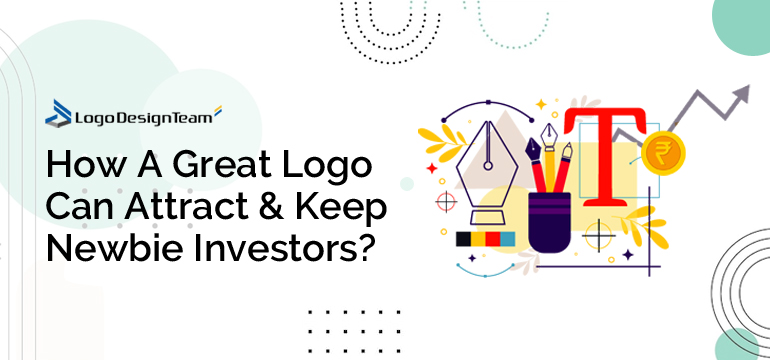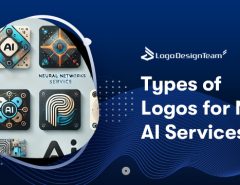Logo design and brand identities often take a backseat at early stage startups, which is understandable given that most founders concern themselves with bigger fish to fry while getting their business off the ground.
However, off-late there have been increasingly clear correlations between strong branding and successful fundraising, especially from the likes of angel investors, and equity crowdfunding platforms.
When it comes to investing in risky pre-revenue startups, investors often look for value wherever it can be found. This includes the skills and experiences of the founding team, prototypes and MVPs, strategic relationships, sales commitments, and ultimately—brand equity.
The effort invested in intangibles such as logo designs, communications, and stories go a long way in creating a compelling case for investors. While we like to think of investors as nuanced professionals, focused exclusively on finding diamonds in the rough, they tend to be just as susceptible to the shine and glitter of captivating visuals as the average layman.
Even though form never outlasts substance in the long-run, during initial stages at least, it can very well outpace it, especially in the increasingly crowded startup funding marketplace at present. In this article, we dive deep into the impact of captivating logos in startup fundraising, and how an investment in this regard can yield multifold returns.

The First Point of Contact
In the early-stages of a startup, when barely a soul outside the core founding team has even heard of it, a logo is the first line of contact to the outside world. This includes customers, influencers, market observers, and ofcourse, investors.
A logo, as with most visual cues, communicates a story subliminally, arousing a wide range of emotions among audiences. A letterform, or monogram style of logo projects a sense of authority, or respectability, whereas a mascot, abstract, or wordless design caters to end consumers, and can project casual whimsy, along with perfection, trust, and professionalism at the same time.
For example, banks and financial institutions predominantly make use of bold logos, with depth, and less frills as whole, with the aim of providing a sense of security, and trustworthiness.
A few budding upstarts are straying from the point, with online investing app, SoFi being one such example, but even here, the overall approach remains in-line with the broader industry, with a few differences highlighting its new-age, innovativeness, and creativity.
It remains well-established that when presented with an overwhelmingly large number of options, the human brain actively pursues a shortcut, also referred to as heuristics. In this case, a short cut is anything that manages to stand out, and make an impact, with a logo being the most likely candidate for a startup to achieve the same.
While this holds true for consumers, even experienced venture capitalists, bankers, and angel investors fall for the age-old trope of all that glitters.
Though sophisticated investors sift through a wide range of data, including the business plans, prospects, economic conditions, and more, before arriving at their decision, visual cues such logos do have an outsized influence.
Establish Trust & Credibility
There are very few other things that symbolize trust and credibility at an early-stage startup quite like a logo.
Unless the business is backed by seasoned professionals, has established partnerships and connections, or a robust IP, product, or service, there is little else for an investor to part with their money, if not for a compelling brand identity, conveying a story of faith and conviction.
This is an extension of the heuristics discussed above, and while a deep dive on the background of the founders, technical due diligence, market research, and other key metrics can help in showcasing the same credibility, the first impression bias can actively work in favor of a startup with an attractive logo.
In addition to visual branding, having access to a comprehensive company info API can further establish trust by providing transparent and verified business information. This tool ensures that potential investors and partners have access to accurate data, reinforcing the startup’s credibility.
Complexity takes longer for the brain to process, visual cues on the other hand, are the dreaded lazy short-cuts that many fall victim to. Many institutional investors like VCs, angel funds, and the PE-majors take extensive measures to safeguard decision-making from such common biases, albeit unsuccessfully.
However, when it comes to equity crowdfunding sites such as Kickstarter, Indiegogo, and SeedInvest, among others, logos, visuals, and brand identities rule the roost. This is quite evident with a quick glance through their most successful campaigns, along with those that failed to raise their targeted amount.
When it comes to average, unsophisticated investors, all that glitters, is in fact gold. Investors on such sites are accustomed to functioning similar to consumers, with stand-out logos, explainer videos, and mesmerizing designs being equated to trust, reliability, and credibility. Even among investors higher-up the value chain, an attractive logo is a great way to get the cognitive biases churning along.
Build Brand Equity
As discussed earlier, time and effort spent on branding, logo designs, and visual identities contribute towards building a startup’s brand equity. Even though it is an intangible asset, it represents value that many investors consider to be along the lines of an MVP, sales pipelines, and promoter backgrounds.
There are widely believed to be four dimensions of brand equity—awareness, customer loyalty, brand associations, and perceived quality. Even though a startup is likely to rank low among most, if not all these dimensions, a step towards setting the stage for brand associations, and perceived quality alone can prove sufficient for many investors.
Contrary to popular belief, a vast majority of seed stage investing effectively boils down to brand perceptions. Beyond just showcasing the commitment and outlook of the founding team, having impressive brand assets, consisting of a logo, along with other visuals, such as packaging, videos, and more, and help put forward the much needed face to an investment pitch.
Building brand equity is a process that lasts all through the lifecycle of a business, and the only question is, when is the right time to get started. However, based on recent trends, brand equity should remain in-line with other aspects of startup building, especially given its rising criticality in fundraising.
Even though a logo is only a part of a company’s brand, in early-stages it represents pretty much the whole of its brand equity. Without sufficient data to judge customer loyalty, or awareness, the only thing to go with is the associations, and perceived quality, which a professionally designed logo can project based on the targeted audiences, demographics, and other characteristics.
Cost To Duplicate
When dealing with a blank-slate startup, which is to say an entity with no revenues, products, services, or any background, investors look closely at the work that has already been put in by the founders and promoters.
Based on this, a critical factor is the cost to duplicate, which as the name suggests, is the cost to build a similar startup from scratch, and the feasibility of doing the same.
If a budding entrepreneur approaches an investor with plans to launch a new pizzeria, unless he or she is renowned in the art of Italian cooking, there are plenty of others who can be roped in to execute the same project and with the same capital outlay. The cost-to-duplicate will be a lot higher if the investment pitch includes a name, logo, branding, and other relevant designs.
For example, one of the main reasons why Ray Kroc stuck with McDonald’s, even though the same concept, recipes and plans could have been easily replicated, was because of the burger chain’s name. The glorious, quintessentially American name, and the beautiful golden yellow arches to go with it effectively ensured that there could never be another “McDonald’s.”
This was, ofcourse, an extreme example, and startup founders shouldn’t spend their precious time kicking their heels for a once-in-a-generation brand name. This was only to show the consequences of a name, brand, and logo. It not only serves to distinguish businesses from competitors, but can also result in substantial competitive moats that can last for ages when done right.
Final Words
It goes without saying that logo design and branding are far from the top priorities of most startup founders as it should be. However, given the current state and trends of angel investing and equity crowdfunding, a logo can play an increasingly critical role in attracting and retaining investors.
Beyond this, an attractive logo can help a company gain traction a lot quicker, given the higher levels of trust, reliability, and engagements often associated with engrossing visuals. Startups which pay attention to such aspects, witness substantial SEO and social media benefits as well, again owing to higher trust.
There are numerous experts and consultants who can help with name selection, and branding, and ofcourse, logo design, available at all price ranges. Even a simple glance through the list of successful startups on leading crowdfunding sites should get the creative juices flowing.




